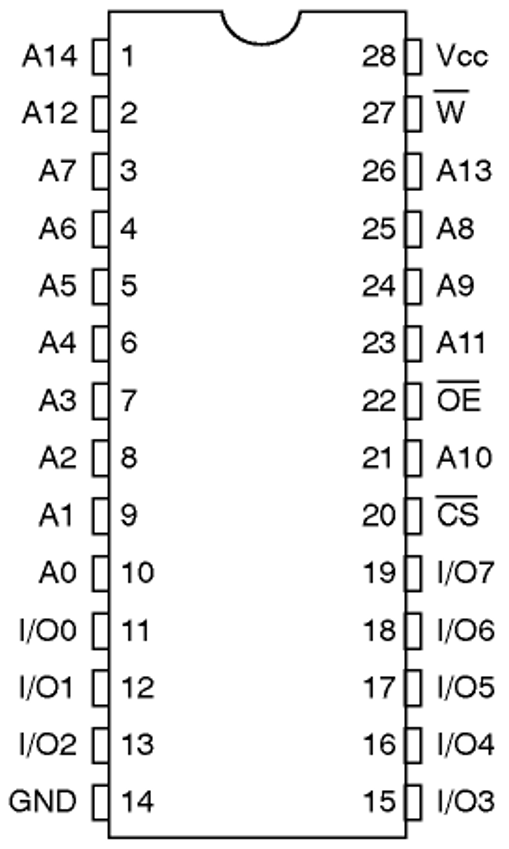The RAM module is a very important part of the architecture because it represents the memory from which we can read, but also write to it. It is also crucial in making subroutine calls in our programs, because, as already mentioned, the subroutine call implies the existence of the stack in the RAM memory, at the top of which the SP register points. Calling a subroutine implies storing a current instruction address from the PC onto the stack. After returning from the subroutine, the same address is retrieved back from the stack to the PC register, so the program can continue executing where it left off. The following figure shows the RAM chip HM65756 and we can see its pin configuration:

- VCC, GND
- IO0–IO7 data signals
- A0–A14 address signals to address 32K bytes
- inverted CS and inverted OE signals for activation – if any of the signals is high, data and address pins are disconnected and in the high impedance state
- inverted CS – chip select
- inverted OE – output enable
- inverted W write signal that enables writing to the chip
It is convenient to note that the pins of the RAM and ROM chips are standardized and located in the same places.